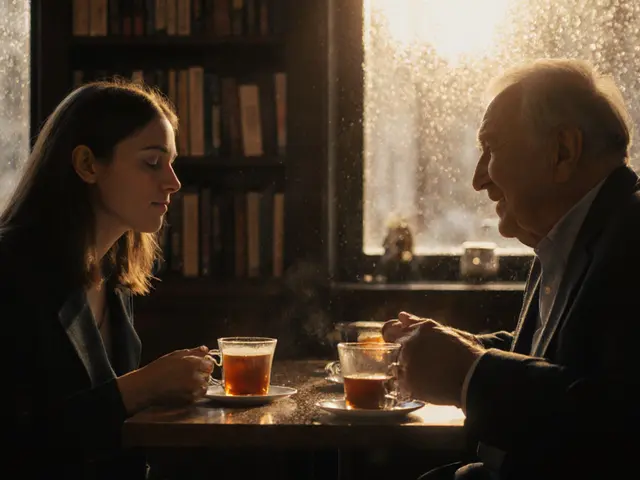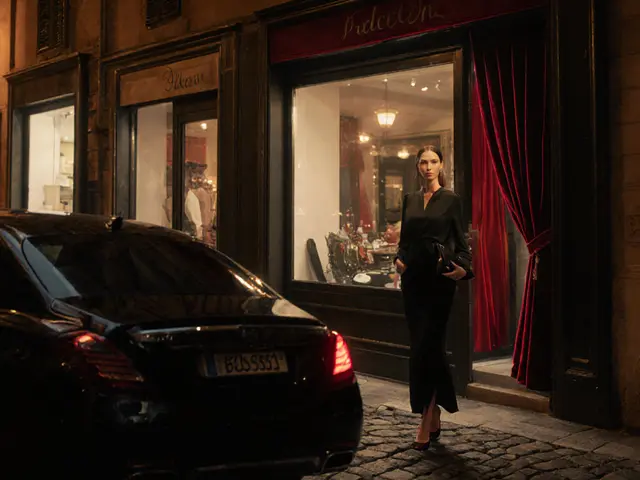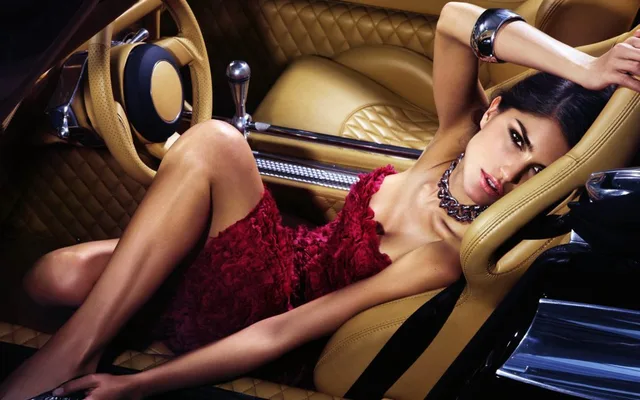When the sun sets over Milan, the city doesn’t sleep-it shifts. The same streets that buzz with designers and shoppers by day transform into a pulsing network of hidden cocktail lounges, buzzing aperitivo spots, and underground clubs that don’t even open until midnight. This isn’t just about partying. It’s about experiencing Milan the way locals do: slowly at first, with aperitivo in hand, then building into late-night beats and intimate jazz corners. If you think Milan is all about fashion shows and museums, you’re missing half the story.
Start with the Aperitivo Ritual
Don’t rush into clubs. Milan’s night begins with aperitivo. Between 7 and 9 p.m., bars across the city turn into casual dining halls where a drink-usually a spritz, negroni, or gin and tonic-comes with a buffet of snacks. It’s not a happy hour. It’s a tradition. And it’s free food.
Head to Bar Basso in the Brera district. This is where the Negroni was invented in 1919. The place hasn’t changed much: marble counters, wooden stools, and a crowd of well-dressed locals sipping drinks while nibbling on crostini and stuffed olives. For a more modern twist, try Il Salumiere near Porta Ticinese. Their aperitivo includes artisanal cured meats, aged cheeses, and seasonal vegetable tarts. You’ll eat more here than you would at dinner in other cities.
Pro tip: Stick to the 7-9 p.m. window. After 9, the buffet disappears. And don’t expect to be seated at a table. Most places are standing-room-only during aperitivo. That’s part of the charm.
Where to Dance: From Underground Clubs to Rooftop Beats
After aperitivo, the real night begins. Milan’s club scene isn’t one-size-fits-all. You’ve got options, depending on your vibe.
If you want raw energy and a crowd that doesn’t care about labels, go to La Scala Club. It’s not the opera house-this is a converted warehouse in the Navigli district. Bass-heavy techno, no dress code, and a crowd that’s mostly locals in their 20s and 30s. The music doesn’t start until 1 a.m., and it doesn’t stop until 6 a.m. The door policy? Just show up. No VIP lists, no bouncers checking your outfit.
For something sleeker, head to Magazzini Generali. This is a multi-level space in the Porta Genova area that blends art installations with electronic music. Think ambient house, deep techno, and live sets from Italian DJs who rarely play outside Milan. The crowd is older-late 20s to 40s-and dressed in minimalist black. It’s not loud. It’s immersive.
And if you want to dance with a view, go to Terrazza Aperol on the top floor of the Pirelli Tower. The skyline of Milan stretches out below you. The music? Upbeat pop and disco remixes. It’s the kind of place where you take photos before you even order a drink. It’s touristy, sure-but the view is worth it.
The Hidden Gems: Jazz, Live Music, and Speakeasies
Milan’s nightlife isn’t just about loud bass and neon lights. Some of the best moments happen in quiet corners.
Blue Note Milano is the city’s top jazz spot. It’s not a big venue-just a cozy room with red velvet chairs and a stage that’s been home to legends like Chet Baker and Herbie Hancock. Shows start at 9:30 p.m. and usually sell out. Book ahead. The cover is €25, but it includes a drink. You’ll hear live piano trios, saxophone solos, and vocalists who’ve performed at Montreux and Monterey.
For something more secretive, find Bar del Fico. It’s hidden behind a fridge door in a small grocery store on Via dei Giardini. You’ll need to know the password. Ask a local. Once inside, you’re in a 1920s-style speakeasy with dim lighting, whiskey flights, and cocktails made with house-infused spirits. No menu. Just tell the bartender your mood-sweet, bitter, smoky-and they’ll craft something you’ve never tasted before.

Where to Eat After the Party
Most clubs close at 6 a.m. But Milan doesn’t shut down. If you’re still hungry, head to Trattoria Milanese on Via Solferino. Open 24 hours, this place serves risotto alla milanese, ossobuco, and fried zucchini flowers until the sun comes up. It’s the kind of spot where you’ll see a group of clubbers in glittery outfits sitting next to a taxi driver in a uniform, both eating the same plate of pasta.
Or try Antico Forno del Fico, a 24-hour bakery that makes the best panzerotti in town-fried dough stuffed with mozzarella and tomato sauce. It’s cheap, greasy, and perfect after a night out.
What to Wear: Dress Code Realities
Milan is Italy. Fashion isn’t optional-it’s survival.
At aperitivo spots and jazz bars, smart casual works. No flip-flops. No hoodies. Jeans and a button-down shirt? Perfect. At clubs like La Scala Club or Magazzini Generali, they don’t check your outfit-but you’ll stand out if you’re wearing sneakers and a t-shirt. Locals wear tailored pants, leather boots, or sleek dresses. You don’t need designer labels. Just look intentional.
At Terrazza Aperol? You’ll see more tourists in shorts and branded tees. That’s fine. But if you want to blend in, skip the athletic wear. Even if it’s 1 a.m., Milan still dresses like it’s 7 p.m.

Getting Around: Transport After Midnight
Public transport stops at 1:30 a.m. After that, your options are limited.
Use the night buses (N lines). They run every 30 minutes and connect the main districts: Porta Genova, Navigli, Brera, and Duomo. The N1 goes from Porta Garibaldi to the city center. N2 covers the south. They’re safe, clean, and cheap-€2.50 per ride.
Taxis are expensive. Uber doesn’t operate here. Instead, use Free Now (formerly MyTaxi). It’s reliable, and drivers are used to late-night riders. Expect to pay €15-€25 for a ride across town.
Walk if you can. Milan’s center is compact. From Duomo to Navigli is only 20 minutes on foot. Just stick to well-lit streets. Avoid alleys behind clubs. And don’t carry your phone in your back pocket.
When to Go: Seasonal Shifts
Milan’s nightlife changes with the seasons.
In summer (June-August), the Navigli canals turn into open-air bars. Tables spill onto the water. You’ll find live acoustic sets and people sipping Aperol while watching the sunset. It’s romantic. It’s crowded. Book a table ahead.
In winter (November-February), indoor spots thrive. Jazz bars fill up. Speakeasies become cozier. Clubs turn up the heat-literally and musically. January is quiet. February brings the pre-Milan Fashion Week rush. That’s when the city explodes. Celebrities show up. VIP lists open. If you want to be seen, this is your window.
November through February is the best time to find local-only spots without the crowds. You’ll get better service. Better drinks. And more authentic experiences.
What Not to Do
- Don’t ask for a “beer and shot.” Milanese bartenders will look at you like you just asked for a hot dog at a Michelin restaurant.
- Don’t try to haggle on cover charges. It’s not a festival. It’s a venue with a sound system and a DJ who flew in from Berlin.
- Don’t assume everyone speaks English. Learn two phrases: “Un aperitivo, per favore” and “Quanto costa?”
- Don’t take photos inside jazz clubs. It’s rude. And the staff will ask you to stop.
- Don’t drink and walk alone in poorly lit areas after 3 a.m. It’s not dangerous-but it’s not smart.
Is Milan nightlife safe at night?
Yes, Milan is generally safe at night, especially in the main nightlife districts like Brera, Navigli, and Porta Genova. These areas are well-lit, patrolled, and crowded with locals and tourists. Avoid isolated alleys and parks after midnight. Stick to busy streets. Use official taxis or Free Now instead of unmarked cars. Pickpockets exist, but they target distracted tourists-keep your phone and wallet secure.
What’s the best night to go out in Milan?
Thursday and Friday nights are the busiest. Clubs are packed, DJs play their best sets, and the energy is high. Saturday is great too, but it’s more tourist-heavy. If you want a local vibe, go on a Tuesday or Wednesday. Some of the best underground clubs have themed nights midweek-jazz, vinyl-only sets, or experimental soundscapes. You’ll get better service and fewer crowds.
Do I need to book tickets for clubs in Milan?
For most clubs, no. La Scala Club, Magazzini Generali, and Bar Basso don’t require tickets. You just show up. But for special events-like a live jazz performance at Blue Note Milano or a guest DJ night at Terrazza Aperol-book ahead. Tickets sell out fast. Use the venue’s official website or Eventbrite. Don’t rely on third-party apps.
Can I go out in Milan without speaking Italian?
Yes, but you’ll miss out. Most bartenders and club staff speak basic English. But if you want the best experience-like ordering a custom cocktail at Bar del Fico or asking for the house special at a jazz bar-you’ll need to use a few Italian phrases. Download Google Translate offline. Or just point. Italians are used to tourists. They’ll help you, but they appreciate the effort.
How much should I budget for a night out in Milan?
You can have a full night out for €40-€70. Aperitivo: €15-€20 (includes food). One club entry: €10-€15 (if any). Two drinks at a club: €12-€20. Night bus ride: €2.50. Late-night snack: €5. If you’re splurging on a jazz show or rooftop bar, add €20-€30. Skip the expensive cocktails at tourist spots. Stick to local bars. You’ll get better drinks for less.
Milan by night isn’t about being seen. It’s about being present. Whether you’re sipping a negroni in a 1920s speakeasy, dancing to techno in a warehouse, or eating panzerotti at 4 a.m. with strangers who become friends-you’re not just visiting. You’re part of the rhythm. And that’s the real Milan.






